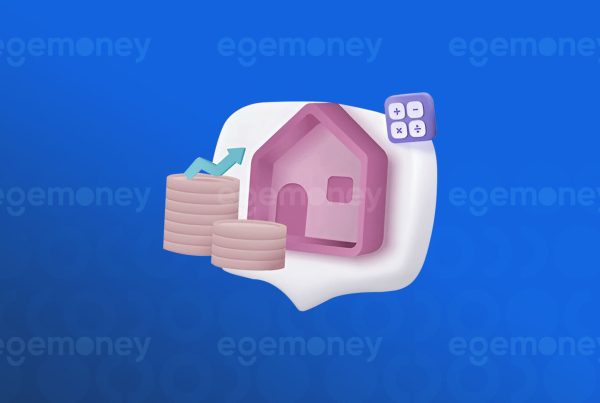 What Are Smart Contracts?
What Are Smart Contracts?
Smart contracts, self-executing contracts with pre-defined rules. They automatically execute actions and enforce the terms of the contract without the need for intermediaries or central authorities. Smart contracts are primarily associated with blockchain technology and are designed to enhance transparency, security, and efficiency in various sectors.
The concept and idea of smart contracts were first introduced in the 1990s by Nick Szabo, a computer scientist and cryptographer. Szabo designed digital protocols that could autonomously enforce agreements specified in contracts in a trust-based and decentralized manner. The underlying principle behind these contracts was their ability to self-execute, resist external interference, and automate processes traditionally carried out by intermediaries.
Smart Contracts and Ethereum
The feasibility of this idea was not possible at the time and remained more of a concept until the advent of the crypto era. Ethereum, created by Vitalik Buterin and launched in 2015 on a decentralized platform, played a pioneering role in bringing smart contracts into the mainstream by introducing Solidity, a specially designed programming language for smart contracts on the blockchain. Additionally, Ethereum used its native currency, ETH, as a bridge for executing smart contracts on its blockchain network.
The introduction of smart contracts on Ethereum revolutionized the crypto industry. Ethereum provided developers with endless possibilities to create decentralized applications (DApps) and decentralized finance (DeFi) protocols. DApps are applications that run on a blockchain and enable direct peer-to-peer interactions without intermediaries. On the other hand, DeFi protocols leverage smart contracts to provide financial services such as lending, borrowing, and decentralized exchanges.
Despite the advancements in other blockchain platforms, Ethereum continues to be the leading and widely adopted platform for smart contracts due to its strong developer community, comprehensive infrastructure, and network effects. Its thriving ecosystem has contributed to the proliferation of numerous tokens, projects, and use cases, solidifying its position as a leader in the smart contract space.
While Ethereum has played a pioneering role, other blockchain platforms have also implemented smart contract capabilities. Examples include Binance Smart Chain, Cardano, and Polkadot, each with their unique features and focusing on different aspects of scalability, security, and interoperability.
How to Create Smart Contracts?
- Contract Conditions: Start by clearly defining the requirements and specifications of your smart contract. Determine the purpose of the contract, the conditions to be fulfilled, and outline any parameters or variables involved in the contract.
- Choose a Platform: Select a suitable development environment to create and test your smart contract. Solidity is the most commonly used programming language for Ethereum smart contracts, and there are tools available with relevant extensions for development.
- Write the Code: Use Solidity to write the code for your smart contract. This involves defining the contract structure, variables, functions, and the logic that governs the behavior of the contract.
- Testing: After writing your code, you can use the Ethereum Virtual Machine (EVM) provided by Ethereum to test it.
- Deployment and Verification: If your test runs successfully, deploy your code on the platform’s network by using tools like Remix and Truffle. Once the deployment transaction is submitted, it needs to be mined and confirmed by the Ethereum network. After a few confirmations, the contract is deployed and considered to be in a functional state.
Automatic Execution in Crypto Trading
Automatic execution in crypto trading refers to the process of executing buy or sell orders automatically without manual intervention. It involves using predefined rules and algorithms to perform trades based on specific conditions.
Traders or developers often develop trading strategies and convert them into code using programming languages or specialized trading platforms. These algorithms continuously analyze real-time market data, such as price movements and volume, to identify trading opportunities.
When predetermined conditions are met, the algorithm automatically generates and executes trades, eliminating the need for human decision-making. Risk management techniques are typically integrated into the algorithm to minimize potential losses and protect trading capital. Users make necessary adjustments to optimize the algorithm’s performance by monitoring its effectiveness.
Automatic execution offers advantages such as increased speed and elimination of emotional biases. However, it also carries risks, and careful strategy development, testing, and monitoring are crucial. It is important to comply with regulatory requirements and pay attention to the limitations imposed by the chosen exchange or platform.
Using Automated Execution in Crypto Trading
Automated execution in crypto trading refers to the process of automatically executing buy or sell orders without manual intervention. It involves the use of predefined rules and algorithms to perform trades based on specific conditions.
Traders or developers often develop trading strategies and convert them into code using programming languages or specialized trading platforms. These algorithms continuously analyze real-time market data such as price movements and volume to identify trading opportunities.
When predetermined conditions are met, the algorithm automatically generates and executes transactions, eliminating the need for human decision-making. Risk management techniques are typically integrated into the algorithm to mitigate potential losses and protect trading capital. Users make necessary adjustments to optimize the algorithm’s performance by monitoring its effectiveness.
Automated execution offers advantages such as increased speed and elimination of emotional biases. However, it also carries risks, and careful strategy development, testing, and monitoring are crucial. It is important to comply with regulatory requirements and pay attention to the limitations imposed by the chosen exchange or platform.


 What Are Smart Contracts?
What Are Smart Contracts?




